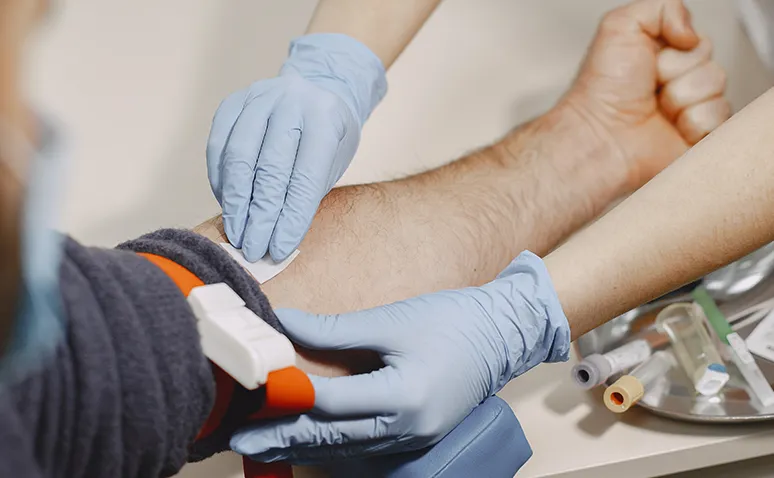Digital X-ray device is among the modern equipment used in the field of medical imaging. These systems, which detect X-rays and convert them into digital format, make it possible to examine images on a computer. In this way, physicians can carry out their diagnostic evaluations faster and in more detail.
Digital X-ray device contributes to the diagnostic process by providing clear and detailed images of different anatomical regions. The obtained data can be securely stored in digital archives and shared with other specialists when necessary. In addition, operating with a low radiation dose helps protect patients from unnecessary exposure. It is a widely preferred imaging method in many fields, from dentistry to orthopedics, chest diseases to trauma assessments.
What is a Digital X-Ray Device?
The digital X-ray device, which has an important place among diagnostic imaging methods in medicine, enables a detailed examination of the internal structures of the body using X-rays. Unlike traditional methods, the images are obtained in digital format, providing clearer and faster results.
Digital systems can be used not only in hospitals but also in field conditions. Especially mobile digital X-ray units offer great convenience in emergency situations or in environments where patients cannot get out of bed. The X-ray taken with these devices can be evaluated by specialists in a short time.
Digital X-ray devices have different features depending on their intended use:
- Obtaining clear images with high-resolution detectors
- Conducting safe examinations with low-dose radiation
- Using contrast agents to enhance the visibility of specific organs and tissues
- Storing and sharing images easily
The purpose of each device used in the imaging field differs. For example, computed tomography provides three-dimensional evaluation with multi-layered cross-sectional images, while digital X-rays provide detailed information on a single plane. Therefore, the question of “what is an X-ray?” can be answered as a two-dimensional imaging technique based on X-rays.
Thanks to modern X-ray device technologies, many conditions such as bone fractures, joint disorders, chest and abdominal diseases can be detected at an early stage. Advantages such as fast results, digital archiving, and comparison with past records when necessary have made this method indispensable in the healthcare field.

How is a Digital X-Ray Taken?
The digital X-ray process is carried out by following specific steps to ensure patient safety and obtain accurate images. The procedure is performed under the supervision of professional healthcare staff.
The process generally proceeds as follows:
- The patient is positioned appropriately for the region to be imaged.
- Metal accessories are removed during the procedure.
- X-rays are converted into digital data through the detector.
- Images are instantly checked on the computer screen.
- Additional shots are taken from different angles if necessary.
This method accelerates the diagnostic process by allowing images to be examined instantly.
How Many Types of X-Ray Devices Are There?
X-ray devices are produced in different types according to their usage areas and technical features. Each device is designed to meet specific diagnostic needs.
The main types are as follows:
- Digital fixed systems: High-resolution devices used permanently in hospitals or clinics.
- Mobile X-ray systems: Units that can be easily transported for bedside imaging and emergencies.
- Fluoroscopy devices: Systems that allow real-time observation of moving organs and processes.
- Mammography devices: Special devices designed for detailed examination of breast tissue.
- Panoramic dental X-ray devices: Systems that capture a wide-angle view of the teeth and jaw structure.
This diversity makes it possible to provide solutions tailored to every medical need.
Frequently Asked Questions
It is widely preferred in orthopedics, dentistry, chest diseases, trauma assessment, and some gastrointestinal examinations.
Its mobility allows imaging for bedridden patients, in emergency rooms, or in field environments.
Compared to traditional methods, a lower dose of X-rays is used, reducing unnecessary radiation exposure for the patient.
They are used to enhance the image quality of certain organs, vessels, or tissues.
While digital X-rays provide two-dimensional images, computed tomography offers multi-layered cross-sections with three-dimensional evaluation.
It is performed to diagnose bone fractures, joint disorders, lung, and some organ diseases.
You can easily have your digital X-ray taken by contacting Denge Tıp.










